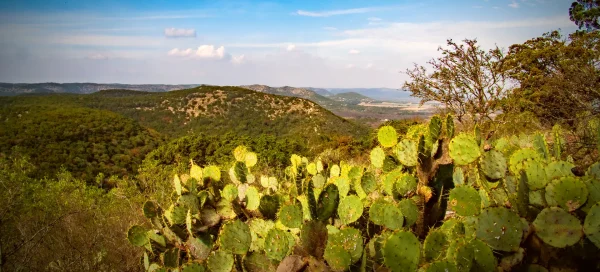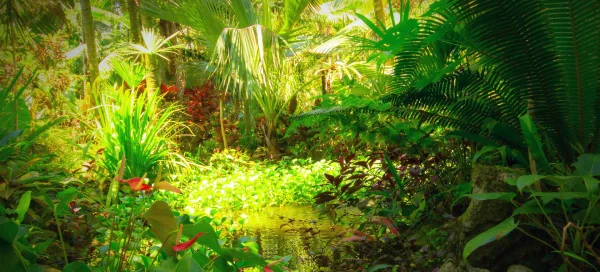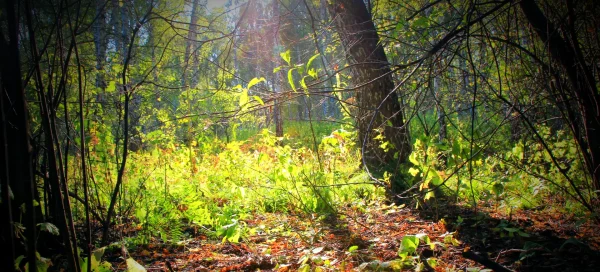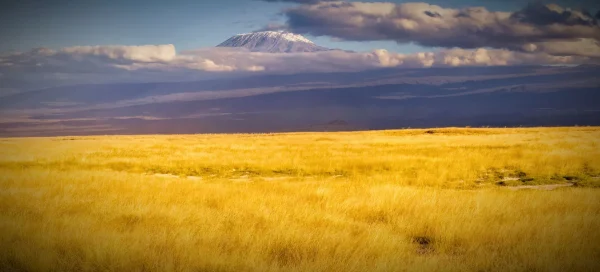Overview
The Red-tailed Boa, scientifically known as the Boa constrictor constrictor, is a large, non-venomous, heavy-bodied snake native to various habitats in Central and South America. Characterized by their distinctive red or reddish-brown tail, these boas are among the most popular and recognized snake species in the wild and captivity. Adults can reach impressive lengths, typically 6 to 10 feet, with some individuals growing even larger. Their skin is beautifully patterned with dark saddles on a lighter background, which provides excellent camouflage in their natural forested environments.
Red-tailed Boas are known for their solitary and nocturnal nature, spending their days hidden within the shelter of tree branches or burrows and becoming more active at night when they hunt. Their diet mainly consists of small to medium-sized mammals and birds, which they subdue through constriction. This method involves coiling around the prey and tightening their grip to induce cardiac arrest. The adaptability of these snakes to various environments has contributed to their wide distribution across the Americas, inhabiting rainforests, arid regions, and agricultural areas.
The reproductive strategy of the Red-tailed Boa is ovoviviparous, meaning they give birth to live young rather than laying eggs. Females can produce litters of 10 to 60 offspring, with the number of young depending on the size and health of the mother. The care provided to the young is minimal once they are born; newborns are fully independent and equipped with the instincts necessary for survival. This reproductive strategy allows for rapid population growth in suitable habitats, highlighting the boa’s resilience and adaptability as a species.
Taxonomy
Kingdom
Phylum
Class
Order
Family
Genus
Species
Sub Species
Type
Physical Description:
Red-tailed Boas exhibit a robust and muscular body, allowing for powerful constriction when capturing prey. Their skin is adorned with a distinctive pattern of dark saddles that contrast with a lighter base color, ranging from tan to gray and even pinkish in some individuals. The tail, from which they derive their common name, is typically a deeper red or reddish-brown, setting them apart from other boa species. The scales of the Red-tailed Boa are smooth, with a shiny appearance that enhances their striking coloration.
Adult Red-tailed Boas can vary significantly, with females generally larger than males. This sexual dimorphism is common in many snake species and is thought to benefit females’ reproductive success, allowing them to carry larger offspring. The head of the Red-tailed Boa is distinct and slightly broader than the neck, equipped with heat-sensing pits that aid in detecting warm-blooded prey in low-light conditions. Their eyes have vertical pupils, a characteristic of nocturnal predators, enhancing their ability to see in the dark.

Lifespan: Wild: ~20 Years || Captivity: ~40 Years

Weight: Male & Female: 20-60 lbs (9-27 kg)

Length: Male & Female: 72-120 inches (183-305 cm)
Characteristic:
Native Habitat:
The Red-tailed Boa’s native habitat encompasses a wide range across Central and South America, from Northern Mexico to Argentina. They are highly adaptable and can be found in various environments, including tropical rainforests, arid lands, and even human-modified landscapes such as farms and plantations. This adaptability to different habitats is attributed to their generalist diet and efficient hunting strategy.
Their preferred habitats are characterized by dense vegetation or rocky areas that provide ample hiding spots and basking sites. Access to water is also important for hydration and shedding, making riverbanks and streams favored locations. The ability of Red-tailed Boas to thrive in diverse environments highlights their ecological versatility and the importance of habitat conservation for their continued survival.
Biomes:
Biogeographical Realms:
Continents:
Countries:
Diet:
Diet & Feeding Habits:
Red-tailed Boas are opportunistic predators with a diet primarily consisting of small to medium-sized mammals, such as rodents, bats, and birds. They utilize a sit-and-wait strategy, relying on their camouflage to remain undetected until prey comes within striking distance. Once prey is within reach, they strike quickly, seizing it with their sharp teeth before coiling around it and applying constriction to induce suffocation.
In captivity, their diet can be easily managed with a regular feeding schedule of pre-killed or frozen-thawed rodents, ensuring the health and safety of both the snake and the caretaker. The feeding frequency depends on the snake’s age and size, with juveniles requiring more frequent meals to support their growth, while adults can be fed less frequently. Proper nutrition is essential for maintaining the health and longevity of Red-tailed Boas in captivity.
Mating Behavior:
Mating Description:
Red-tailed Boas are ovoviviparous, with females giving birth to live young after a gestation period of approximately 5 to 8 months. Mating typically occurs shortly after the female sheds, with males using chemical cues to locate potential mates. During the breeding season, males may compete for access to receptive females, employing physical displays and wrestling matches to establish dominance.
The number of offspring can vary widely, ranging from 10 to 60, depending on the size and condition of the female. Newborns are independent from birth, capable of fending for themselves without parental care. This reproductive strategy allows Red-tailed Boas to quickly populate suitable habitats, although it also means that young snakes face high mortality rates from predators and environmental challenges.
Reproduction Season:
Birth Type:
Pregnancy Duration:
Female Name:
Male Name:
Baby Name:
Social Structure Description:
Red-tailed Boas are solitary animals, with individuals typically only coming together for mating. They establish territories they defend from other snakes, using chemical cues to communicate their presence and avoid direct conflicts. This solitary nature extends to their hunting behavior, where they rely on stealth and the element of surprise to capture prey.
Understanding the social structure and behavior of Red-tailed Boas is important for their conservation and management, both in the wild and captivity. It helps design effective conservation strategies that respect their need for space and habitat complexity, ensuring that these magnificent snakes can continue to thrive in their natural environments.
Groups:
Conservation Status:
Population Trend:
While the IUCN does not list the overall conservation status of the Red-tailed Boa, some subspecies and local populations may be under threat due to habitat destruction, hunting, and collection for the pet trade. Monitoring and protecting these populations is essential for their long-term survival, requiring cooperation between conservationists, governments, and local communities.
In captivity, Red-tailed Boas are among the most popular snakes kept as pets, attributed to their impressive size, distinctive appearance, and relatively docile nature. Responsible breeding and ownership practices are crucial to ensuring the welfare of captive boas and preventing the release of unwanted pets into non-native environments, where they can become invasive and pose risks to local ecosystems.
Population Threats:
The primary threats to the Red-tailed Boa include habitat destruction due to deforestation and urbanization, hunting for their skin and meat, and capture for the international pet trade. These pressures can lead to declines in local populations, especially in areas where natural habitats are rapidly being converted for agricultural or developmental use.
Additionally, releasing captive boas into non-native environments can create ecological imbalances, as they may compete with native species for resources or become predators of species not adapted to their presence. Managing these threats requires comprehensive conservation strategies that include habitat protection, sustainable use, and education on the ecological importance of Red-tailed Boas.
Conservation Efforts:
Conservation efforts for the Red-tailed Boa involve habitat protection, research into their ecology and population dynamics, and regulation of the pet trade to ensure sustainable practices. Protected areas and wildlife reserves play a crucial role in preserving natural habitats, providing sanctuaries where boas and other wildlife can thrive. Education and outreach programs are also important for raising awareness about the importance of boas in their ecosystems and the threats they face.
Regarding the pet trade, initiatives to promote captive breeding and responsible pet ownership can help reduce the demand for wild-caught snakes, alleviating pressure on natural populations. Collaborative efforts between conservation organizations, governments, and the reptile-keeping community are essential for effectively conserving Red-tailed Boas and their habitats.
Additional Resources:
Fun Facts
- Red-tailed Boas have heat-sensing pits on their faces, which allow them to detect warm-blooded prey even in complete darkness.
- Despite their size and strength, Red-tailed Boas are generally docile and can become accustomed to handling by humans when kept as pets.
- They are excellent swimmers and can be found near water bodies in their natural habitat.
- The shedding process of Red-tailed Boas involves the snake rubbing against rough surfaces to peel away the old skin, revealing a vibrant new layer beneath.
- Boa constrictors have been featured in various cultures and mythologies, often symbolizing strength, stealth, and renewal.
- The lifespan of a Red-tailed Boa in captivity can exceed 30 years, making them a long-term commitment as pets.
- They are crucial in controlling rodent populations in their natural habitats, benefiting local agriculture and human health.
- Red-tailed Boas give birth to live young, a relatively rare trait among snakes, which are mostly oviparous (egg-laying).
- Highly flexible jaws and skin facilitate their ability to constrict and swallow prey much larger than their head size.
- Conservation efforts for Red-tailed Boas include habitat preservation, research, and education to ensure these iconic snakes continue to thrive in the wild and captivity.











